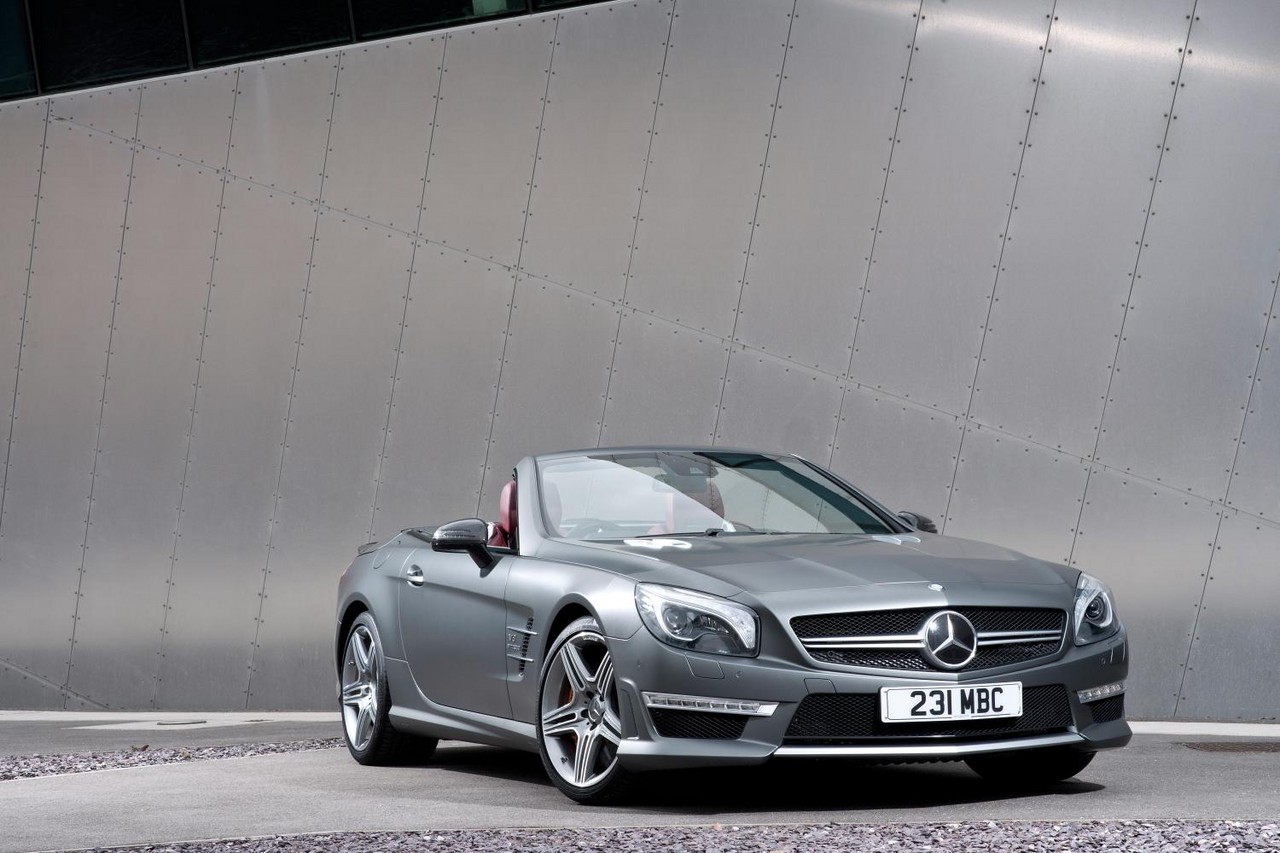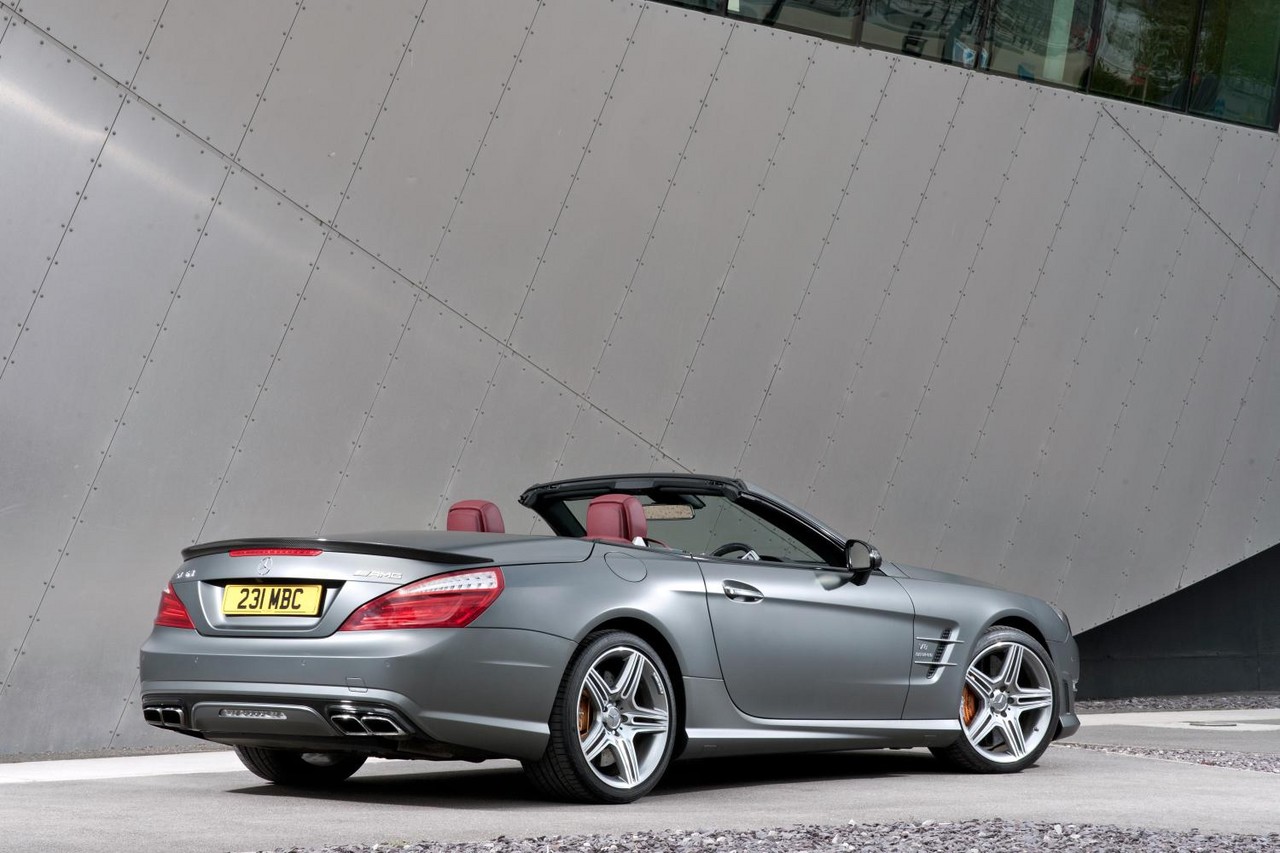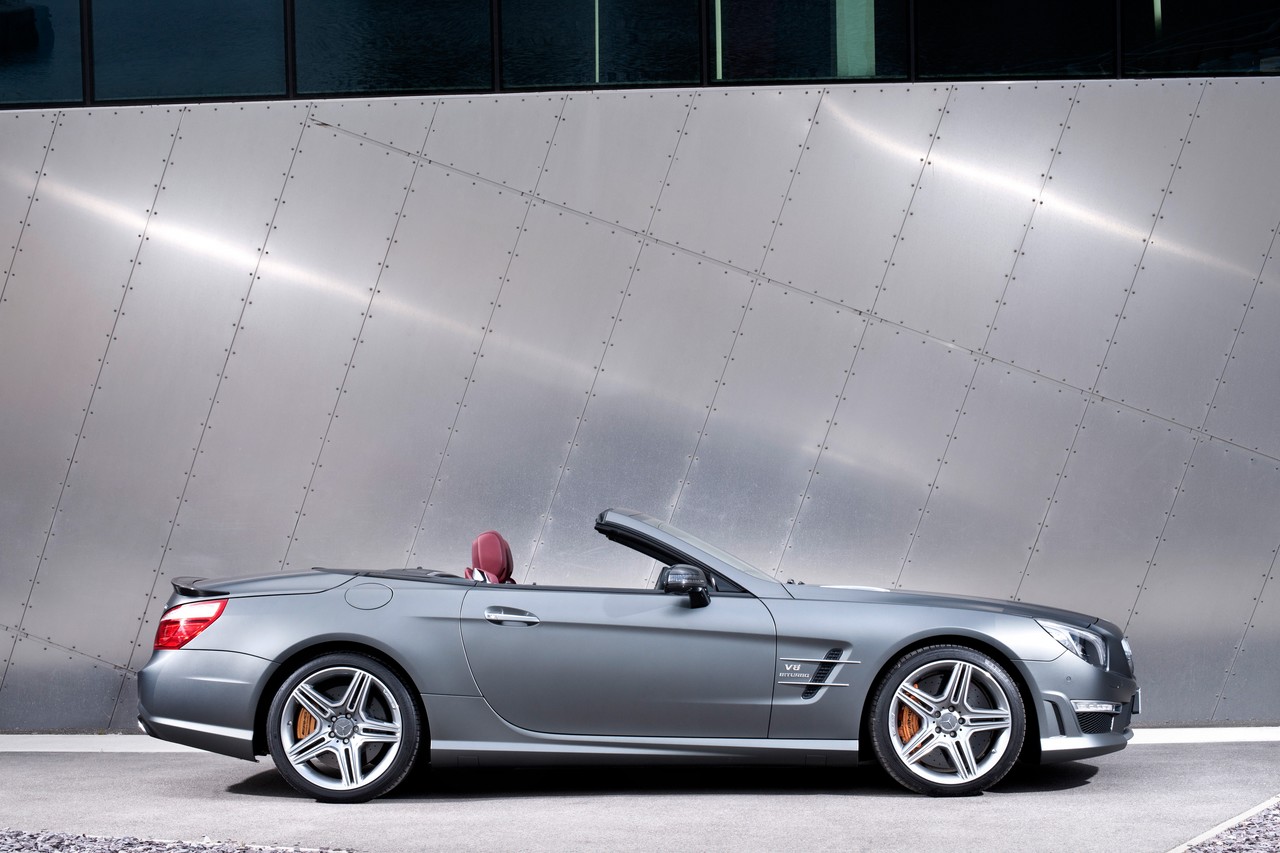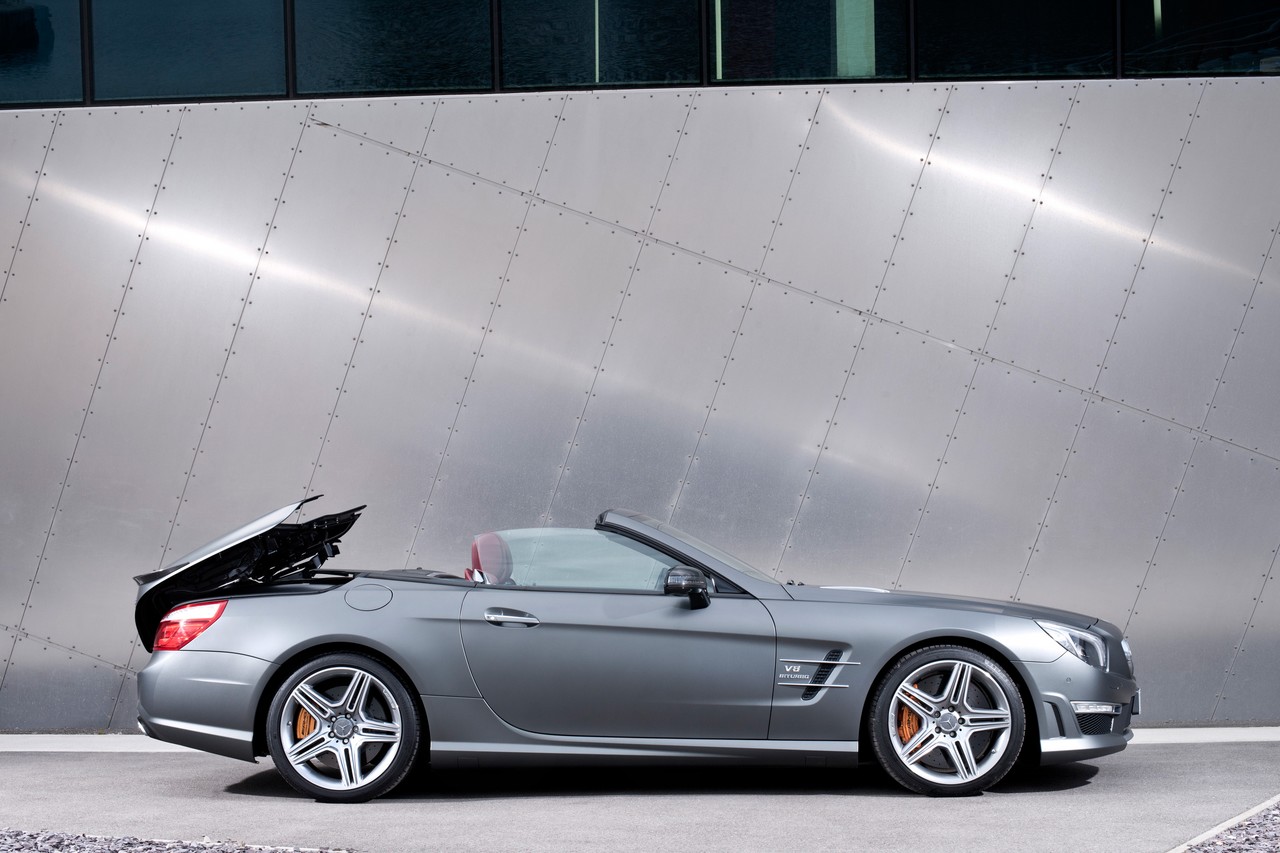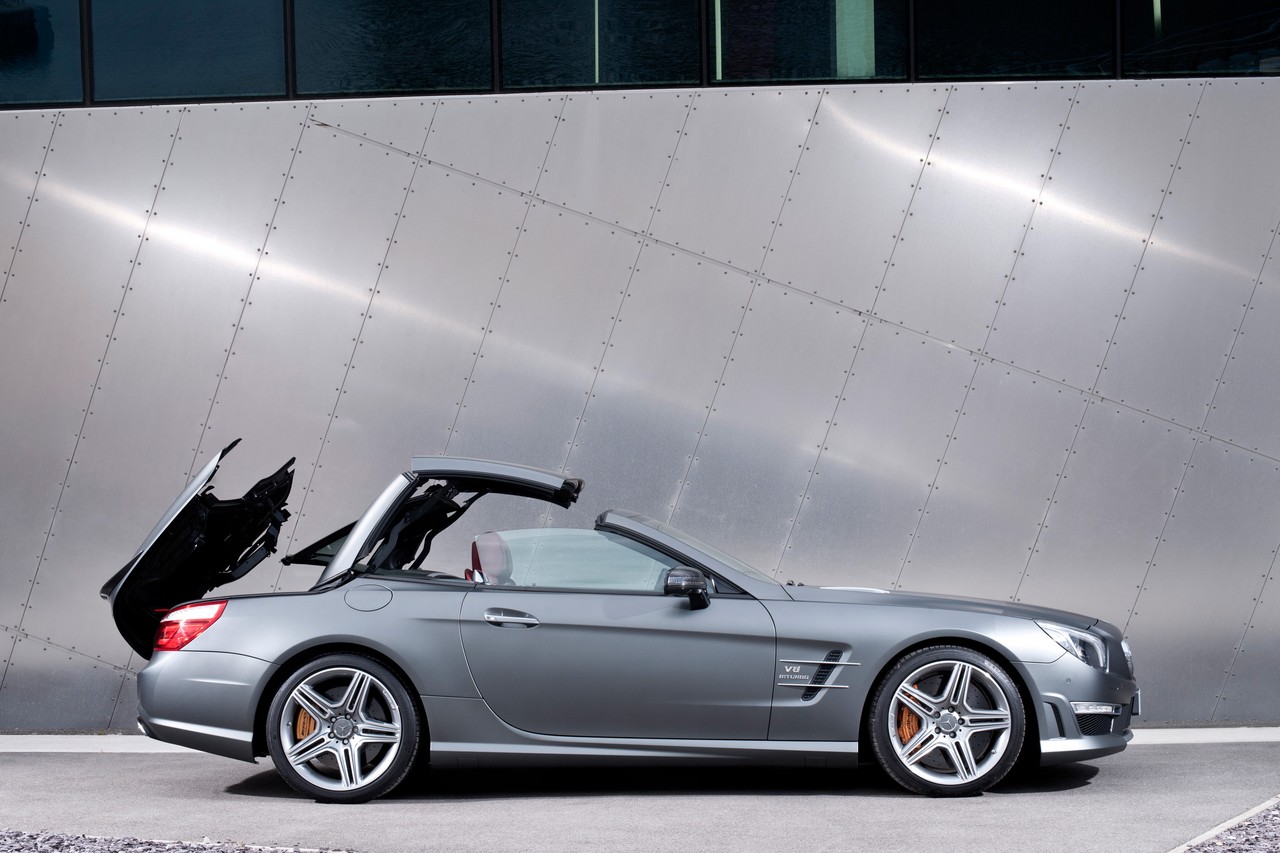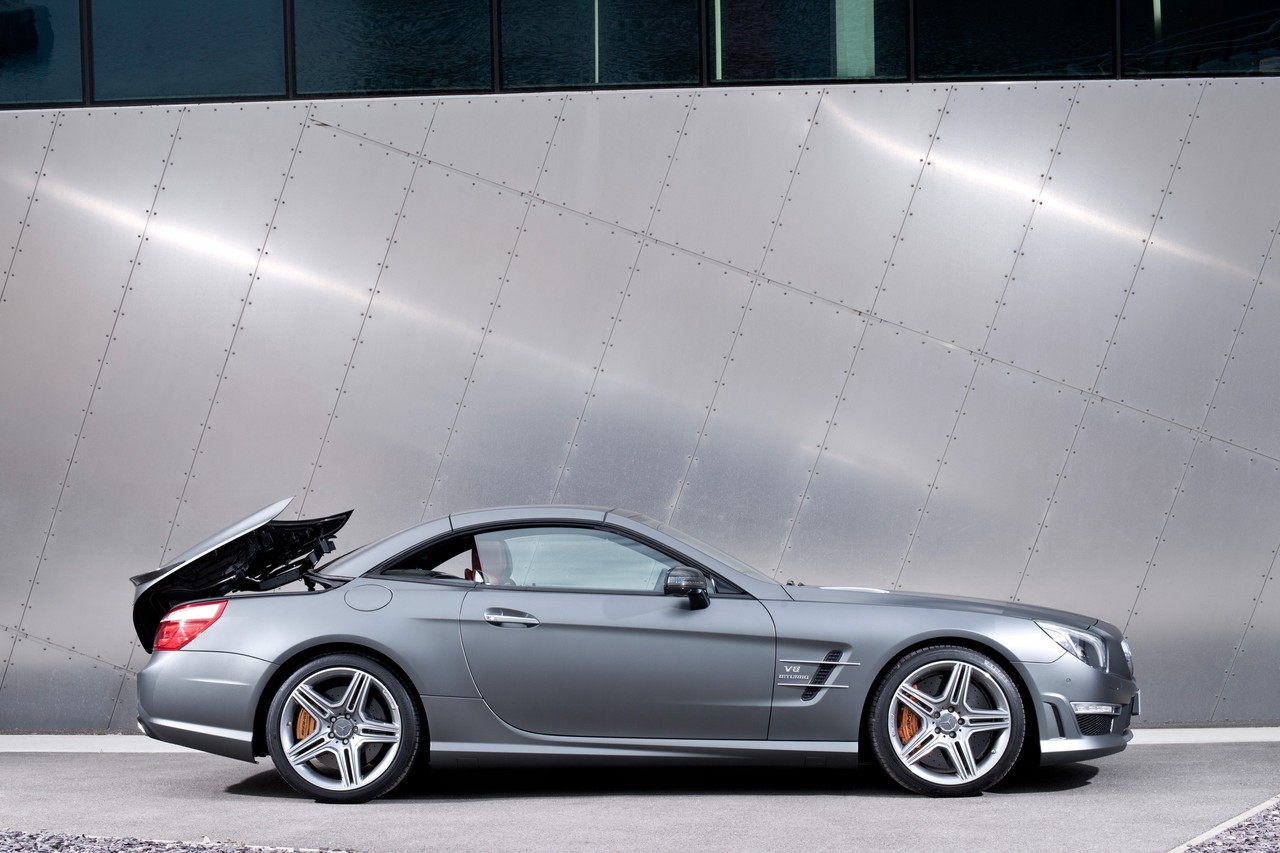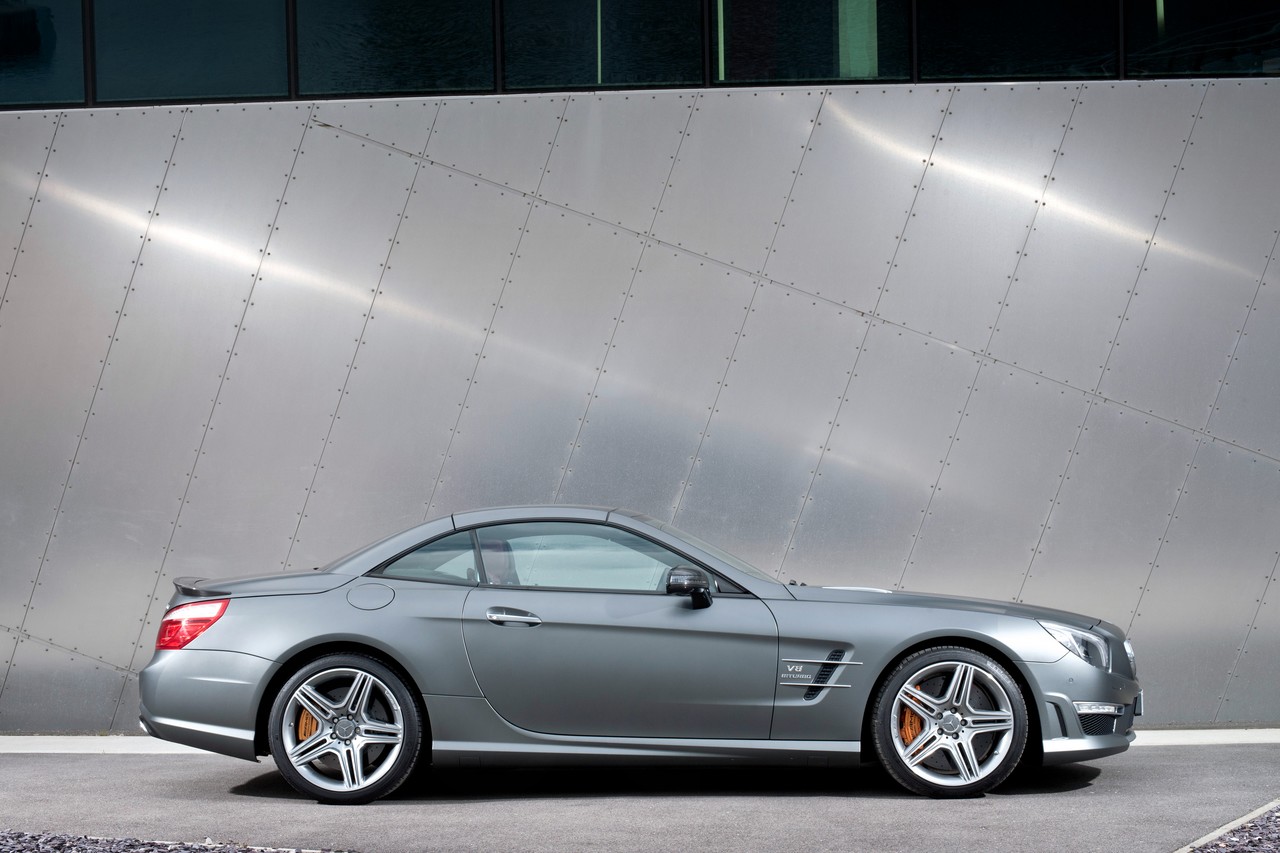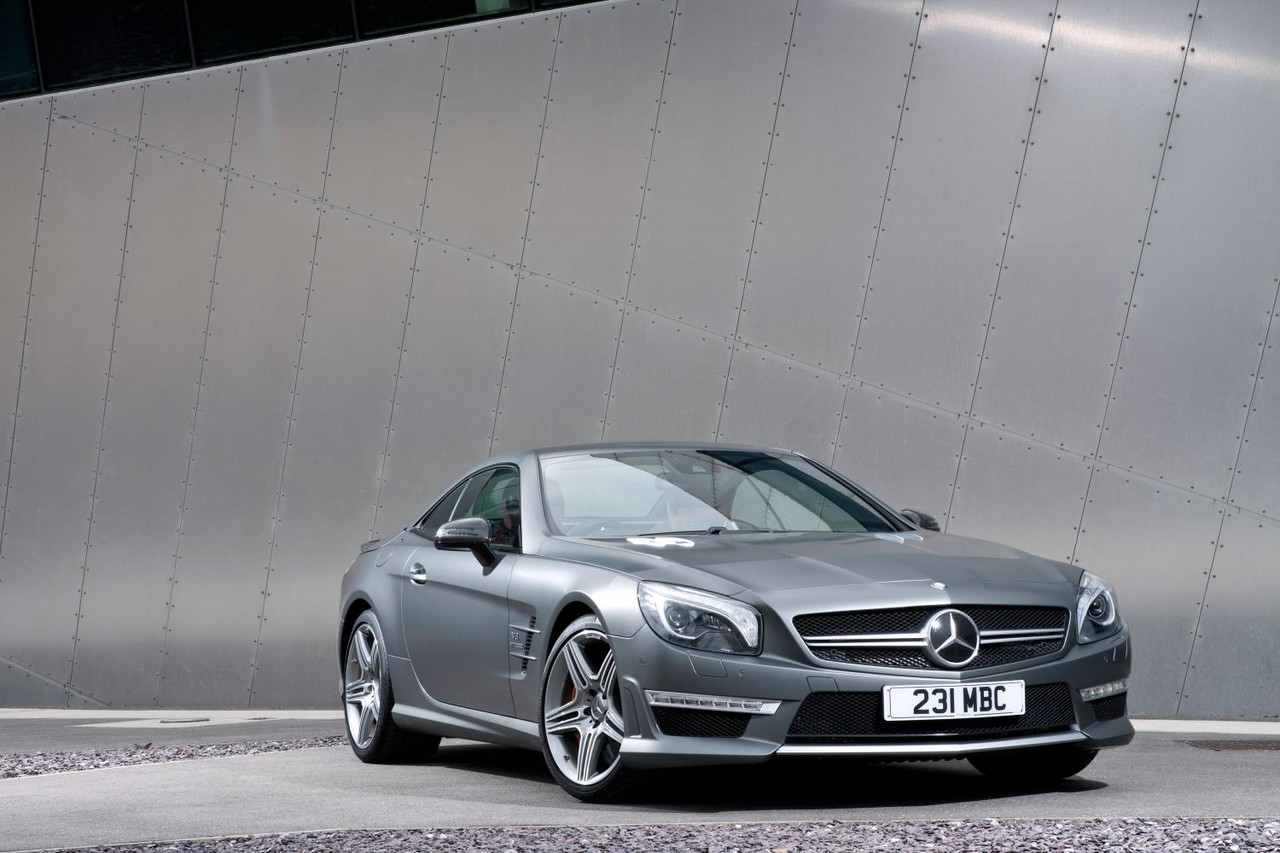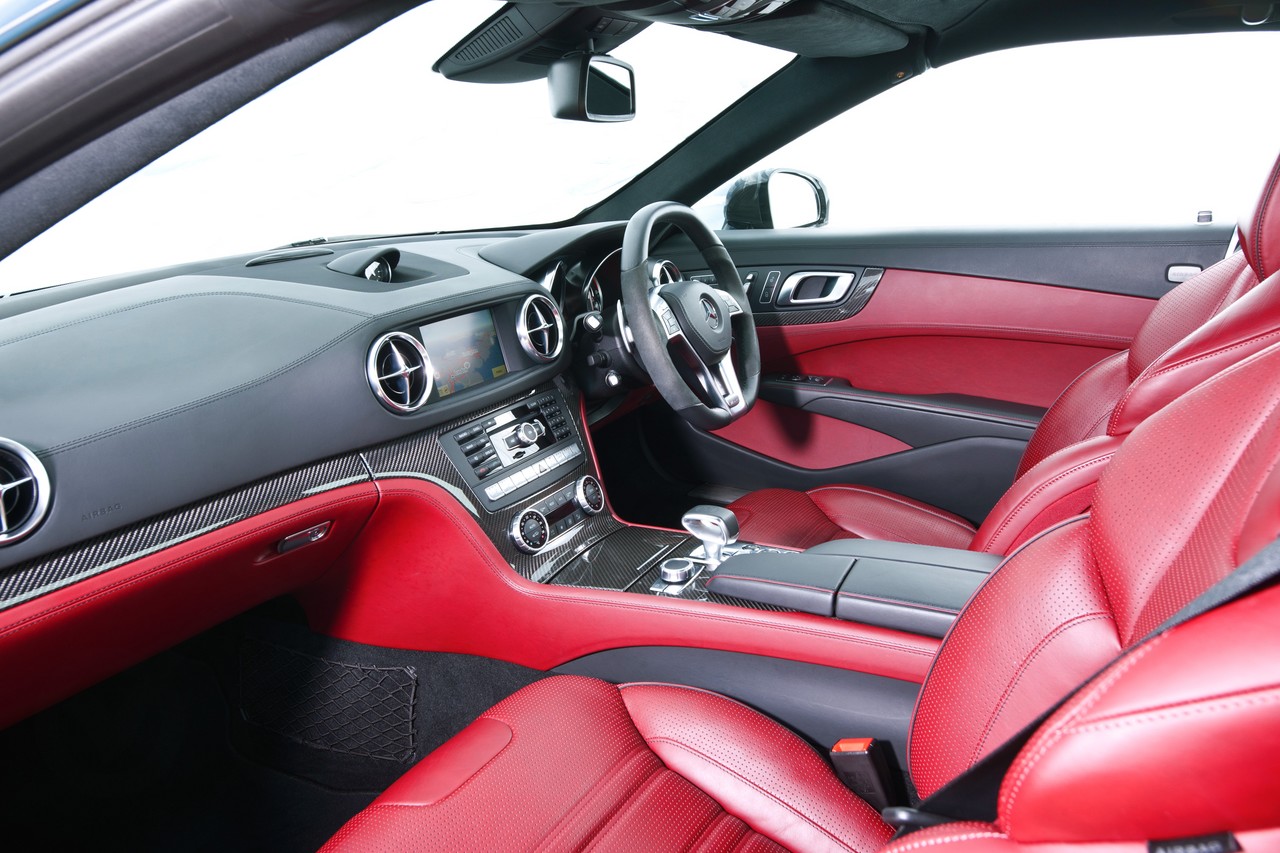
- Electric steering lacks feel
- For SL 63, suspension lacks compliance
- For SL 65, weight of V12 engine dulls dynamics
- High running, maintenance and depreciation costs
Overview
Released in Australia in September 2012, the Mercedes-Benz R231 SL 63 AMG and SL 65 AMG were two-seat roadsters with retractable roofs. Manufactured in Bremen, Germany, the rear-wheel drive R231 SL 63 AMG and SL 65 AMG were powered by 5.5-litre and 6.0-litre biturbo petrol engines, respectively.
SL 63 AMG: M157 biturbo V8
The M157 V8 engine had an aluminium block with cast-in aluminium-silicon (Silitec) cylinder liners, forged crankshaft made of 38MnS6BY steel alloy (a combination of manganese, sulphur, boron and yrrtrium) with eight counterweights and rotating in five main bearings, fracture-split forged connecting rods, an aluminium cylinder head, double overhead camshafts (driven by three high-performance chains), variable intake and exhaust camshaft adjustment over a range of 40 degrees via four pivoting actuators, four valves per cylinder and a compression ratio of 10.0:1. Furthermore, the M 157 had a dry weight of 204 kg, maximum engine speed of 6400 rpm and Bosch MED 17.7.3 control unit.
Significantly, the M157 engine had spray-guided direct injection with piezo fuel injectors (operating at 100 to 200 bar on a demand-related basis), a Garrett MGT2260MSL turbocharger for each cylinder bank (welded to the exhaust manifold) and air/water intercooling. For the SL 63 AMG, maximum charge pressure was 1.0 bar. To minimise fuel consumption, the M157 engine had an ‘ECO start/stop system’ – which the driver could disable if desired – and multi-spark ignition whereby the spark plugs could fire multiple times during the combustion sequence for more efficient combustion.
The SL 63 AMG could accelerate from rest to 100 km/h in 4.3 seconds and to 200 km/h in 12.9 seconds. Over the combined ADR 81/02 test cycle, fuel consumption was 10.1 litres per 100 km.
SL 65 AMG: M279 biturbo V8
The 5980 cc M279 V12 engine had an aluminium alloy block with 82.6 mm bores and a 93.0 mm stroke, an aluminium alloy cylinder head, manifold fuel injection, a single overhead camshaft per cylinder bank, a one-piece chain drive, a forged crankshaft, forged pistons, twin turbochargers, an air-to-liquid intercooler, three valves per cylinder (two intake and one exhaust, the latter filled with sodium) that were actuated by aluminium roller rocker arms and twelve double ignition coils (for multi-spark ignition). Furthermore, the M279 engine had a compression ratio of 9.0:1.
To minimise fuel consumption, the M279 engine had an ECO start/stop system which could shut down the engine when the vehicle was stationary in traffic. Over the combined ADR 81/02 cycle, fuel consumption for the SL 65 AMG was 11.7 litres per 100 km. Furthermore, the SL 65 AMG could accelerate from rest to 100 km/h in 4.0 seconds and to 200 km/h in 11.8 seconds; its top speed was electronically-limited to 250 km/h.
| Engine | Trans. | Years | Peak power | Peak torque | |
|---|---|---|---|---|---|
| SL 63 AMG | 5.5-litre bi-turbo petrol V8 (M157) | 7sp semi-auto | 2012-14 | 395 kW at 5500 rpm | 800 Nm at 2000-4500 rpm |
| 2014-20 | 430 kW at 5500 rpm | 900 Nm at 2250-3750 rpm | |||
| SL 65 AMG | 6.0-litre bi-turbo petrol V12 (M279) | 7sp auto | 2012-20 | 463 kW at 4800-5400 rpm | 1000 Nm at 2300-4300 rpm |
AMG Speedshift MCT and 7G-Tronic transmissions
For the SL 63 AMG, the seven-speed ‘AMG Speedshift MCT’ (Multi Clutch Technology) had a compact, wet start-up clutch that operated in an oil bath rather than a conventional torque converter. For the SL 65 AMG, however, the ‘AMG Speedshift Plus 7G-Tronic’ transmission had a conventional torque converter.
Both the AMG Speedshift MCT and 7G-Tronic transmissions were accompanied by steering wheel gearshift paddles and had four selectable drive modes:
- Controlled Efficiency, ‘C’, for soft throttle response, acceleration from rest in second gear, early upshifts and the ECO start/stop function was enabled;
- Sport, ‘S’, which disabled the ECO start/stop system, provided 25 per cent faster gearshifts, greater throttle response and could partially suppress cylinders during upshifts under full load by interrupting the ignition and injection sequence;
- Sport plus, ‘S+’, for gearshifts 25 per cent faster than Sport and full throttle gearshifts in 100 milliseconds; and,
- Manual, ‘M’, in which there were no automatic downshifts or upshifts (even when maximum engine speed was reached).
Other features of the AMG Speedshift transmissions included:
- Automatic throttle-blipping on downshifts;
- A double-declutching function for multiple downshifts; and,
- Delayed gear shifting if a certain level of lateral acceleration was present, to prevent gearshifts when cornering.
Both the SL 63 AMG and SL 65 AMG had the same transmissions ratios, i.e. 4.38 (1st), 2.86 (2nd), 1.92 (3rd), 1.37 (4th), 1.00 (5th), 0.82 (6th) and 0.73 (7th), with a final drive ratio of 2.65.
Dimensions and body
Compared to their Mercedes R231 SL AMG predecessors, the R231 SL 63 AMG and SL 65 AMG were 98 mm longer (at 4633 mm), 62 mm wider (1877 mm), 5 mm taller (1300 mm) and had 25 mm longer wheelbases (2585 mm).
Significantly, the R231 SL had an all-aluminium bodyshell that weighed 254 kg, 110 kg lighter than predecessor; the bodyshell was also around 20 per cent stiffer (torsional rigidity). While the SL 63 AMG had a kerb weight of 1845 kg, the SL 65 AMG was 105 kg heavier at 1950 kg.
For the R230 SL, boot capacity with the roof up was 504 litres, though this decreased to 364 litres when the roof was retracted.
Suspension
The Mercedes R231 SL was fitted with multi-link front and rear suspension with semi-active adjustable damping as standard. The suspension included Mercedes-Benz’s ‘Active Body Control’ which used high-pressure hydraulics and a control unit to adapt suspension damping to the driving situation and thereby reduce body movement; the driver could also select from ‘Comfort’ and ‘Sport’ modes.
Steering
The Mercedes R231 SL had an electromechanical, rack-and-pinion steering with speed-sensitive. For the R231 SL AMG models, the steering ratios were constant.
Safety equipment
Standard safety equipment for the Mercedes SL 63 AMG and SL 65 AMG included dual front airbags, seat-mounted front side (thorax) airbags, front door-mounted head airbags, ABS, electronic brake force distribution, brake assist, electronic stability control, traction control, active front seat head restraints (‘Neck-Pro’), automatically deploying rollover bears, and seatbelts with pre-tensioners and load limiters. The SL was fitted with an active bonnet which, in the event of a pedestrian collision, would rise to minimise the severity of the pedestrian’s subsequent impact with the vehicle.
As standard, the SL 63 AMG and SL 65 AMG were also fitted with:
- Mercedes-Benz’s ‘Pre-Safe’: in the event that an accident was anticipated, Pre-Safe would prepare the vehicle by tensioning the front seat belts, inflating the air cushions in the multicontour seats and closing the sunroof and windows (if open);
- Brake Assist Plus: used a 24 GHz radar sensor with a range of 30 metres and a 77 GHz radar sensor with a range of 200 metres to monitor the distance to the vehicle ahead and would warn the driver if there was a risk of a collision. Brake Assist Plus could detect vehicles when travelling at speeds up to 200 km/h, and stationary objects when the driver was travelling at 7 km/h to 72 km/h. Significantly, Brake Assist Plus could calculate the necessary brake force assistance to prevent a rear-end collision, build up that pressure in the braking system and provide it as soon as the brake pedal was depressed for ‘the best possible deceleration’;
- Distronic Plus (adaptive cruise control with brake warning): an ‘adaptive’ cruise control system which used two short-range radar sensors positioned behind the front bumper to monitor the road up to 30 metres ahead, and a long-range radar located behind the radiator grille which had a range of 200 metres. Operating at speeds up to 200 km/h, Distronic Plus used an electronic control unit to analyse the information from both radar systems to calculate the engine, automatic transmission and braking parameters required for proximity control. As such, Distronic Plus could automatically apply the brakes to prevent the vehicle from becoming too close to traffic ahead (the time interval could be specified) and accelerate back to the set speed when traffic allowed. To accelerate from rest, the driver only needed to operate the Distronic stalk on the steering column or briefly depress the accelerator pedal. With Distronic Plus, automatic deceleration of up to four (4) m/s2was possible. If Distronic Plus detected that heavier braking was required, a warning light would illuminate in the instrument cluster and be accompanied by an audible warning. Furthermore, the electronic proximity control system could be activated independently of Distronic Plus at speeds over 30 km/h to alert the driver if they were approaching another vehicle too rapidly;
- Active Blind Spot Assist: active at speeds above 60 km/h, a corrective braking force would be applied to the wheels on one side of the vehicle if the driver attempted to change lanes when a vehicle was detected in the driver’s blind spot;
- Active Lane Keeping Assist: would vibrate the steering wheel as the vehicle approached a continuous lane marking line and, if crossed, automatically brake wheels on one side of the vehicle to return the vehicle within the lane; and,
- Attention Assist with drowsiness detection: operated at speeds in excess of 80 km/h and assessed driver behaviour (including steering movements) for signs of drowsiness; if detected, the driver would be provided with visual and audible warnings.
Brakes: SL 63 AMG and SL 65 AMG
The SL 63 AMG and SL 65 AMG had 390 mm by 36 mm composite front brake discs with six-piston fixed callipers and 360 mm by 27 mm integral rear discs with single-piston sliding callipers. Both front and rear discs were ventilated and perforated.
As an extra-cost option, the SL 63 AMG and SL 65 AMG were available with larger ceramic discs which included 402 mm by 39 mm front discs and 360 mm by 32 mm rear discs.
Features: Mercedes SL 63 AMG
Standard features for the Mercedes SL 63 AMG included 19-inch five-twin-spoke AMG alloy wheels (9.0J front and 10.0J rear) with 255/35 R19 front and 285/30 R19 rear tyres, a 600 watt Harman Kardon Logic 7 surround sound system with fourteen speakers, a six-disc DVD/CD changer, MP3/WMA/AAC compatibility, auxiliary inputs (3.5 mm/iPod/USB), an SDHC card slot and a 10 GB HDD for music storage, COMAND Online (cockpit management and data system) with a 17.8 cm colour monitor, DVD-based navigation, TV tuner, Bluetooth connectivity and ‘Linguatronic’ voice recognition, climate control air conditioning, ‘Airscarf’ neck level heating, power adjustable AMG front seats with multi-contour backrests, front seat heating and ventilation functions, Nappa leather upholstery, cruise control with variable speed limiter (‘Speedtronic’), front and rear fog lights, directional bi-xenon headlights with adaptive lighting, daytime LED running lights, rain-sensing wipers, front and rear parking sensors, a reversing camera, leather-wrapped multifunction steering wheel with gearshift paddles, remote central locking with proximity key and keyless start (‘Keyless Go’), power windows and heated mirrors, a power adjustable steering wheel (for height and reach), a power-operated park brake, tyre pressure monitoring, ambient lighting, carbon-fibre interior trim, IWC analogue clock, AMG floor mats, trip computer with ‘Racetimer’, an alarm and immobiliser.
The Mercedes SL 63 AMG also featured:
- ‘Active Parking Assist’ which could identify parking spaces using ultrasound sensors and autonomously steer the vehicle into the space;
- ‘Hands-Free Access’ which could open the boot in response to the driver moving their foot in the vicinity of the rear bumper; and,
- ‘Magic Vision Control’ which directed water onto the windscreen via channels in the windscreen wiper blades to keep the windscreen clean.
Features: Mercedes SL 65 AMG
Compared to the SL 63 AMG, the Mercedes SL 65 AMG was distinguished by its 19-inch five-spoke AMG alloy wheels with 255/35 R19 front and 285/30 R19 rear tyres, Bang & Olufsen BeoSound AMG surround sound system with 900 watt output, twelve loudspeakers and digital sound processor (DSP), UHI (Universal Handy Interface) convenience telephony, leather roof lining, panoramic vario-roof and heated wiper blades.
As standard, the SL 65 AMG was also fitted with a locking rear differential.
June 2014 updates
In June 2014, the Mercedes SL 63 AMG and SL 65 were updated and standard features were extended to include digital radio (DAB), Mercedes-Benz’s ‘Frontbass’ system which used the free spaces in the front footwell structures as resonance chambers for the bass loudspeakers, Active Contour seats and power-closing doors.
The SL 63 AMG was also fitted with a locking rear differential (previously limited to the SL 65 AMG).
Brochures and downloads
- Press Kit: Mercedes-Benz R231 SL-Class (September 2012)
- Specifications: Mercedes-Benz R231 SL-Class (September 2012)
- Brochure: Mercedes-Benz R231 SL-Class (December 2012)
- Brochure: Mercedes-Benz R231 SL-Class (May 2014)
Related links
- Press Kit: Mercedes-Benz R231 SL (March 2012)
- Press Kit: Mercedes-Benz R231 SL 63 AMG (May 2012)
- Mercedes-Benz Australia: SL 63 AMG
- Mercedes-Benz Australia: SL 65 AMG
- Mercedes-AMG: SL 63
- Mercedes-AMG: SL 65
- Wikipedia.org: Mercedes-Benz R231 SL-Class
